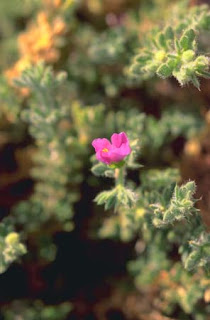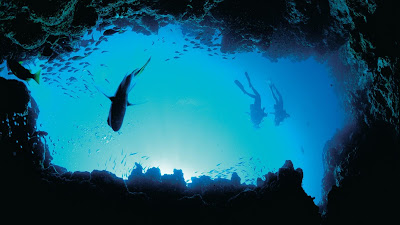NABQ
(Managed Resources Protected Area)
· Protectorate name derived from the plural Arabic word "Nebak" which nominate coastal sand dunes, one of common land features in Nabq coastal zone.
Nabq Occupancy
· Nabq protected area occupies the area between Sharm El Sheikh – Dahab road at the west and the coastline of the southern part of Gulf of Aqaba at the east in addition to a marine zone of 5 Km width starting from South protectorate borders to the north of Dahab City. Nabq occupies a total area of 586 Km2 (464.6 km2 of land and 121.9 Km2 of the sea).
Protected Area Ecosystems
· There are several ecosystems in Nabq either terrestrial, coastal or marine. Starting from higher altitudes with high granite mountains (maximum 1070 meters) with freshwater catchments, oasis, valleys, vegetated inland sand dunes, vegetated coastal sand dunes, coastal mud and salt flats, mangrove, seagrass, coral reefs and deep water down to more than 1100 meters.
· The uniqueness of Nabq protected area is so far exceeding the various ecosystems to an exceptional integrity of these ecosystems, no barriers or any source of disturbance is isolating one or more of these ecosystems what means proper supporting of various forms of life.
Justification of Declaration
· Nabq is an important component of Gulf of Aqaba protected area network, diverse virgin and highly integral ecosystems in addition to highly important and fragile ecosystems are the major factor
Local Community (Bedouins)
El Sheikh 3otaik
· The local community in Southern Sinai are broken down into 8 tribes two main tribes which are Mezeina and Tarabin are inhabiting Sharm El Sheikh, Dahab, Nuweiba and Taba cities in addition to Nabq and Abu Gallum protected areas.
· Bedouins have traditionally occupied Sinai Peninsula including protected areas retaining their traditional rights and continue to occupy their settlements, fishing, grazing were regulated to balance between maintaining their sources of income and conservation of natural resources. All activities that are likely to damage habitats or reduce biodiversity are now regulated by EEAA staff in co-operation with Bedouin, several Bedouins are now employed in EEAA to work as Rangers to assist in management and conservation activities in protected areas.
· Bedouin culture has been on strict tribal laws and traditions. Nature is respected, water is consumed sparingly, small water reservoirs are constructed on hillsides to assist wildlife, the relationship between coral reefs, mangroves and fisheries are clearly understood and no damage is allowed. Tribal law prohibits cutting of "green trees", a penalty could be up to three of 2 years old camels or their equivalent value. A common say acting as a rule "killing a tree is like killing a soul". Much can be learned from their statements and protected areas help in driving more of local communities toward more sustainable activities and practices.
· When decide to explore or have photos in a Bedouin village, please ask for a prior arrangement with your tour guide or park guards to prepare for that as respecting their conservative traditions.
Mangrove
· Mangrove forest in Nabq is stretched as a discontinuously along 14 Km of Protected area coast along Gulf of Aqaba mainly in front of the alluvial fan of Wadi Kid covering an area of 50.09 hectares, Nabq mangrove is a single species "Avicennia marina" is considered as the northernmost mangrove in the Red Sea and Indo-pacific region. The occurrence of mangrove in Nabq is encouraged by the seasonal rain flush from supplying Wadi.
· Mangrove ecosystem is invaluable especially when present along the coast of poor sea lacking nutrients, hence the exported organic nutrients from mangrove ecosystem acting as a single source of nutrients which are exported to other neighboring marine ecosystems like coral reefs.
· Mangrove with its exceptional growth form and dense aerial roots surrounding is a good buffer regulating actions between land and sea, erosion results from wave and current action is controlled, while sediments with runoff from land are trapped in mangrove what stabilize the shoreline and isolating underground water from escaping festally to the sea.
· The high capacity of mangrove ecosystem to accumulate carbon either in trees or in the soil is of highly global importance in mitigation of elevated levels of atmospheric carbon dioxide mostly exceeding other adjacent the seagrass ecosystem.
· Careful examination of the root system will reveal a profusion of snails, crabs, algae, larval fish, shrimp, bivalves and other several species.
Coral Reef
 · Tectonic formation of Gulf of Aqaba provided diverse forms of shoreline and sea profiles, the cost may starts with shallow reef flat extends to several hundred meters or up to more than a kilometer before getting to deeper water as south to Ghraquana village or may be too narrow or totally no reef flat as in the northern part of Nabq (closed area) where the high granite mountains meets the sea.
· Tectonic formation of Gulf of Aqaba provided diverse forms of shoreline and sea profiles, the cost may starts with shallow reef flat extends to several hundred meters or up to more than a kilometer before getting to deeper water as south to Ghraquana village or may be too narrow or totally no reef flat as in the northern part of Nabq (closed area) where the high granite mountains meets the sea.
· Next to reef may be either shallow sandy bottom with dense seagrass and scattered coral patches of different sizes or steep slope to deeper water and moreover reef walls may begin from the reef edge deep to several meters depth. Several lagoons are present along the coast of Nabq, some are surrounded by mangrove trees as in Gharquana, Rowaissyia, Monquatea lagoons while, others are in reef lagoons of different sizes and depths ranged from less than one meter to more than 7 meters depth, these lagoons are nursery ground support several types juvenile fishes.
· Diverse sea profile results in support of various types of coral species, so large massive corals like brain corals which are rare in Sharm El Sheikh and Ras Mohammed are common with large sizes in Nabq. Unique underwater coral reef formations adding enjoying experience for diving and snorkeling.
· A total of 208 species of hard corals, 119 species of soft corals, 7 seagrass species and about 20 of the world threatened species are in Nabq including Dugong "Seacow", green turtles, Napoleon fish in addition to other terrestrial species.
Terrestrial Ecosystems
Flora of Nabq
· Nabq contains 134 plant species of which 86 are perennial, so off-track driving is prohibited to conserve important floristic communities like Salvadora persica, in Arabic "Arak", which spans over an area of about 36 Km2 stabilizing soil and supporting lives of several species, some are endangered like Gazelle which feeds on plant leaves and fruits.
 Sinai is
considered to be an internationally important migration route for the birds
especially Soaring birds. This is because the geographical oddity of the area
as its located between two continents and two seas, it serves as a land bridge
for those migrating birds which do not cross Mediterranean and Red seas in a
wide front. Most of Raptors and White storks choose to continue toward South Sinai to cross the sea water.
Sinai is
considered to be an internationally important migration route for the birds
especially Soaring birds. This is because the geographical oddity of the area
as its located between two continents and two seas, it serves as a land bridge
for those migrating birds which do not cross Mediterranean and Red seas in a
wide front. Most of Raptors and White storks choose to continue toward South Sinai to cross the sea water.
 Sinai is
considered to be an internationally important migration route for the birds
especially Soaring birds. This is because the geographical oddity of the area
as its located between two continents and two seas, it serves as a land bridge
for those migrating birds which do not cross Mediterranean and Red seas in a
wide front. Most of Raptors and White storks choose to continue toward South Sinai to cross the sea water.
Sinai is
considered to be an internationally important migration route for the birds
especially Soaring birds. This is because the geographical oddity of the area
as its located between two continents and two seas, it serves as a land bridge
for those migrating birds which do not cross Mediterranean and Red seas in a
wide front. Most of Raptors and White storks choose to continue toward South Sinai to cross the sea water.


























Comments